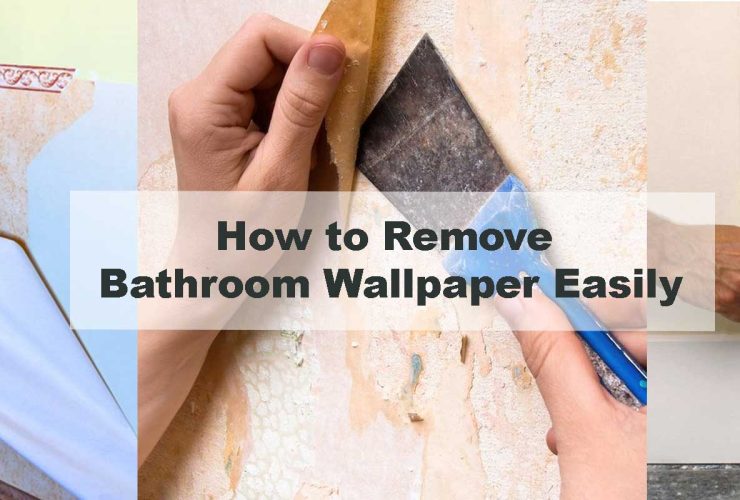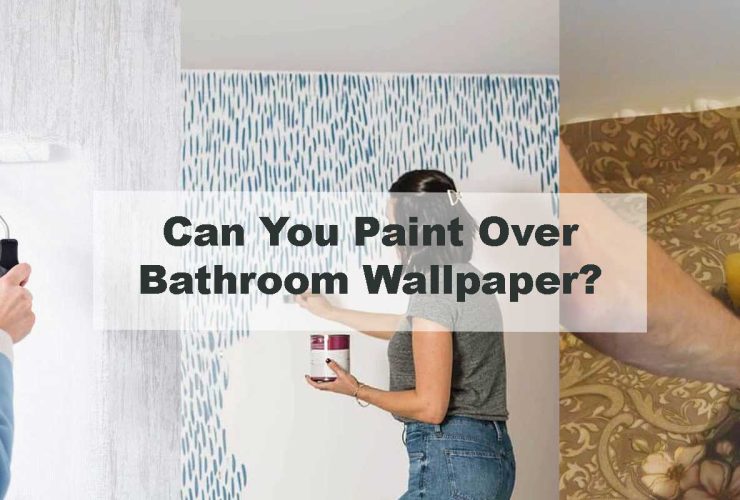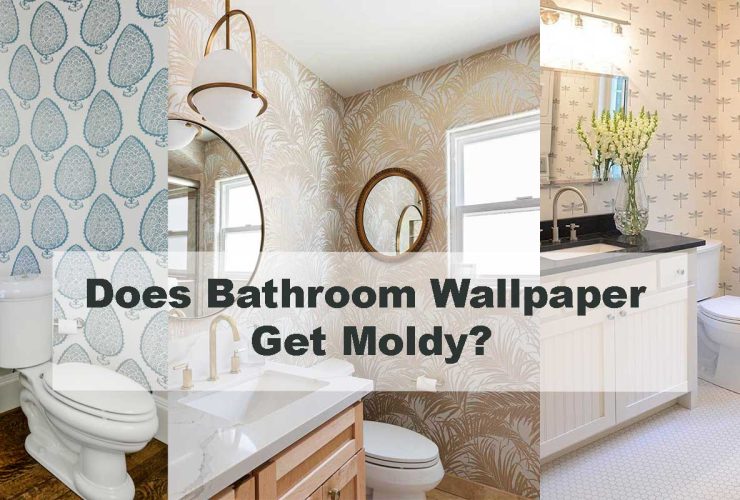Can You Wallpaper a Powder Room With Low Ventilation?
Powder rooms may be the smallest spaces in your home, but they often make the biggest impression on guests. These compact, often windowless rooms are designed more for convenience than comfort, which raises a common design question: Can you wallpaper a powder room with low ventilation? The good news is that you absolutely can—and with the right preparation, materials, and styling, your powder room can become a statement space rather than a forgotten corner.
Unlike full bathrooms, powder rooms typically lack showers or bathtubs, which means they don’t experience the same high levels of steam and moisture. This gives homeowners greater flexibility to use wallpaper as a design feature, even in rooms with limited airflow. By focusing on durable finishes like vinyl or peel-and-stick, using mold-resistant primers, and sealing edges properly, you can enjoy a space that is both stylish and practical. Wallpaper not only transforms the mood of a small room but also creates depth, texture, and personality in ways paint simply cannot.
If you’re exploring design possibilities, our curated bathroom wallpaper collection offers a wide range of moisture-friendly, stylish options tailored for powder rooms and beyond.
Why Ventilation Matters in Wallpaper Projects
Ventilation isn’t just about comfort—it plays a huge role in humidity control. In bathrooms and powder rooms, moisture builds up quickly from sinks, steam, and poor airflow. For wallpaper, that means a higher risk of:
- Peeling and curling edges
- Mold and mildew growth
- Bubbles forming under the surface
But here’s the good news: powder rooms usually don’t have showers or tubs, so the moisture levels are much lower than in full bathrooms. This gives you more flexibility with wallpaper choices and techniques. Still, understanding the environmental conditions is key—especially in small, enclosed rooms where moisture has fewer escape routes.
How Lack of Ventilation Affects Wallpaper
In poorly ventilated powder rooms, moisture from hand washing and general use can linger longer. This leads to localized humidity, especially around sinks or toilets. Over time, even minor moisture exposure can wear down adhesives or degrade certain wallpaper finishes. That’s why choosing materials and adhesives that are designed for moist conditions is crucial.
The Best Wallpaper Types for Low-Ventilation Powder Rooms
Not all wallpaper is made equal. For rooms without proper ventilation, you need materials that can withstand occasional moisture and still look good for years. Here are your best bets:
Vinyl Wallpaper
Vinyl is your MVP. It’s durable, washable, and naturally resistant to moisture. Ideal for low-airflow powder rooms. This type is especially great for families or high-traffic homes where longevity is important. Bonus: vinyl wallpaper comes in an endless array of colors and prints, making it easy to match any decor.
Peel and Stick Wallpaper
Modern peel-and-stick wallpaper is perfect for small spaces and rentals. It handles humidity better than paper wallpaper and is easy to remove or adjust. Plus, it’s renter-friendly. See our peel-and-stick bathroom wallpaper collection for options designed to last.
Fiberglass or Non-Woven Wallpaper
These high-tech materials resist mold and mildew better than traditional paper. They also tend to be breathable, which helps prevent moisture buildup underneath. They’re a smart investment if you want durability and a finish that resists warping or discoloration.
Moisture-Resistant Wallpaper Coatings
Some wallpaper products come with built-in protective coatings that make them more resilient in humid environments. These are especially useful if your powder room gets used frequently or shares a wall with a high-moisture area like a laundry room or kitchen.
Proper Prep Is Everything
No matter what wallpaper you choose, prep is critical. Here’s how to set your powder room up for success:
Prime the Walls
Use a mold-resistant primer or wallpaper liner to create a barrier between the wallpaper and the wall. This also helps wallpaper adhere more evenly, reducing the chance of future bubbling.
Seal the Edges
Apply clear caulk around vulnerable areas like the baseboards and corners to keep moisture from seeping behind the wallpaper. This step is easy to skip but makes a huge difference in longevity.
Choose the Right Tools
Use a wallpaper smoothing tool or plastic spatula to press out any air pockets during application. Trapped air or uneven application is a fast track to moisture problems.
Design Tips for Powder Rooms With Low Ventilation
Powder rooms are tiny, which means bold wallpaper can have a big impact. But low ventilation calls for smart styling that combines aesthetics with practicality.
Go for Statement Walls
Instead of wallpapering all four walls, pick one feature wall. This reduces material exposure to moisture and still creates a strong visual impression. It’s a smart move if you’re working with an ultra-small space or testing wallpaper for the first time.
Choose Patterns That Mask Wear
Busy prints like botanicals or geometrics can hide small imperfections caused by moisture or minor bubbling. Darker hues also help conceal future wear. Our botanical wallpaper collection offers great moisture-friendly options.
Avoid Heavy Textures
Embossed or fabric wallpapers may trap moisture and dust. Stick with smooth, wipeable surfaces. They’re easier to maintain and less likely to harbor mildew.
Coordinate With Finishes
Use moisture-resistant trims and moldings to complement your wallpaper. For example, glossy or semi-gloss paints around borders can act as a barrier against humidity buildup.
Installation Tips for Humid or Poorly Ventilated Bathrooms
For peace of mind, follow these best practices:
Let the Wallpaper Acclimate
Leave your wallpaper roll in the room for 24 hours before applying. This helps prevent post-installation expansion and bubbles. Temperature and humidity acclimation is especially important in small, sealed rooms.
Use Wallpaper Paste Wisely
If you’re using traditional wallpaper, opt for mold-resistant paste. For peel-and-stick, ensure the surface is 100% dry and clean before application. Always follow the manufacturer’s instructions.
Avoid Extreme Humidity for 48 Hours
After installation, avoid running water or using the space heavily for at least 2 days. This gives the adhesive time to cure properly. If possible, keep the door ajar or use a fan to help airflow.
Bonus Tip: Dehumidifier Hack
If you’re working in a truly moisture-heavy powder room, place a mini dehumidifier inside for a few days post-installation. It’s a small step that can drastically improve results.
Maintenance Matters
Even the most moisture-resistant wallpaper needs a little love.
- Wipe down walls regularly with a dry or damp cloth
- Keep an eye on edges for signs of lifting
- Use a fan or open door after use to circulate air
- Avoid harsh cleaning products that can erode finishes
Want more advice on upkeep? Check out easy ways to clean and maintain bathroom wallpaper.
Common Myths About Wallpaper in Ventless Powder Rooms
“Wallpaper always peels in a bathroom.”
Not true—peeling is preventable with the right materials and prep.
“You can’t use wallpaper if there’s no window.”
Wrong again. No window doesn’t mean no wallpaper—just smarter wallpapering.
“Wallpaper traps moisture and grows mold.”
Only if you use the wrong kind. Moisture-resistant and breathable options are designed to avoid this issue.
“Powder rooms are too small for wallpaper.”
False. In fact, small rooms are perfect for bold wallpaper choices because they don’t overwhelm the space.
Not Sure Where to Start? Try a Moisture-Friendly Design Strategy
If you’re hesitant to commit to wallpaper in a low-ventilation powder room, start by testing a moisture-friendly design strategy. Opt for vinyl-coated wallpaper in small doses—like a half wall or a framed accent section. This allows you to experiment with bold style while minimizing exposure to potential humidity.
Pair your wallpaper with other materials that resist moisture, such as ceramic tiles, wainscoting, or high-gloss paint. This blended approach not only looks upscale, it also provides durability where it matters most.
FAQs About Wallpapering Powder Rooms
Can I use regular wallpaper in a powder room?
Only if the room has low humidity and you use a moisture-blocking primer. For best results, go with vinyl or peel-and-stick options.
How do I prevent wallpaper from peeling in humid rooms?
Seal edges, use mold-resistant paste, and allow proper curing time post-installation.
What’s the best wallpaper for a small powder room?
Look for vinyl or peel-and-stick wallpapers in bold prints to make the space pop while withstanding light moisture.
Is wallpaper better than paint in low-ventilation rooms?
It can be—especially if you’re going for visual impact and don’t want to repaint often. Just make sure it’s moisture-safe.
How often should I replace wallpaper in powder rooms?
With proper care, high-quality wallpaper can last 5–10 years even in lower ventilation spaces. Inspect annually for wear.
Can wallpaper damage drywall in powder rooms?
Only if installed improperly or exposed to prolonged moisture. Use a wallpaper liner and remove with care to avoid wall damage.
Conclusion
So, can you wallpaper a powder room with low ventilation? Absolutely. With the right product, proper prep, and a bit of maintenance, even the most air-tight powder room can rock wallpaper without issue. Want to get started? Explore our modern bathroom wallpaper styles or dive into more design ideas on our blog. Wallpaper isn’t just possible in powder rooms—it might be your smartest style upgrade yet.



